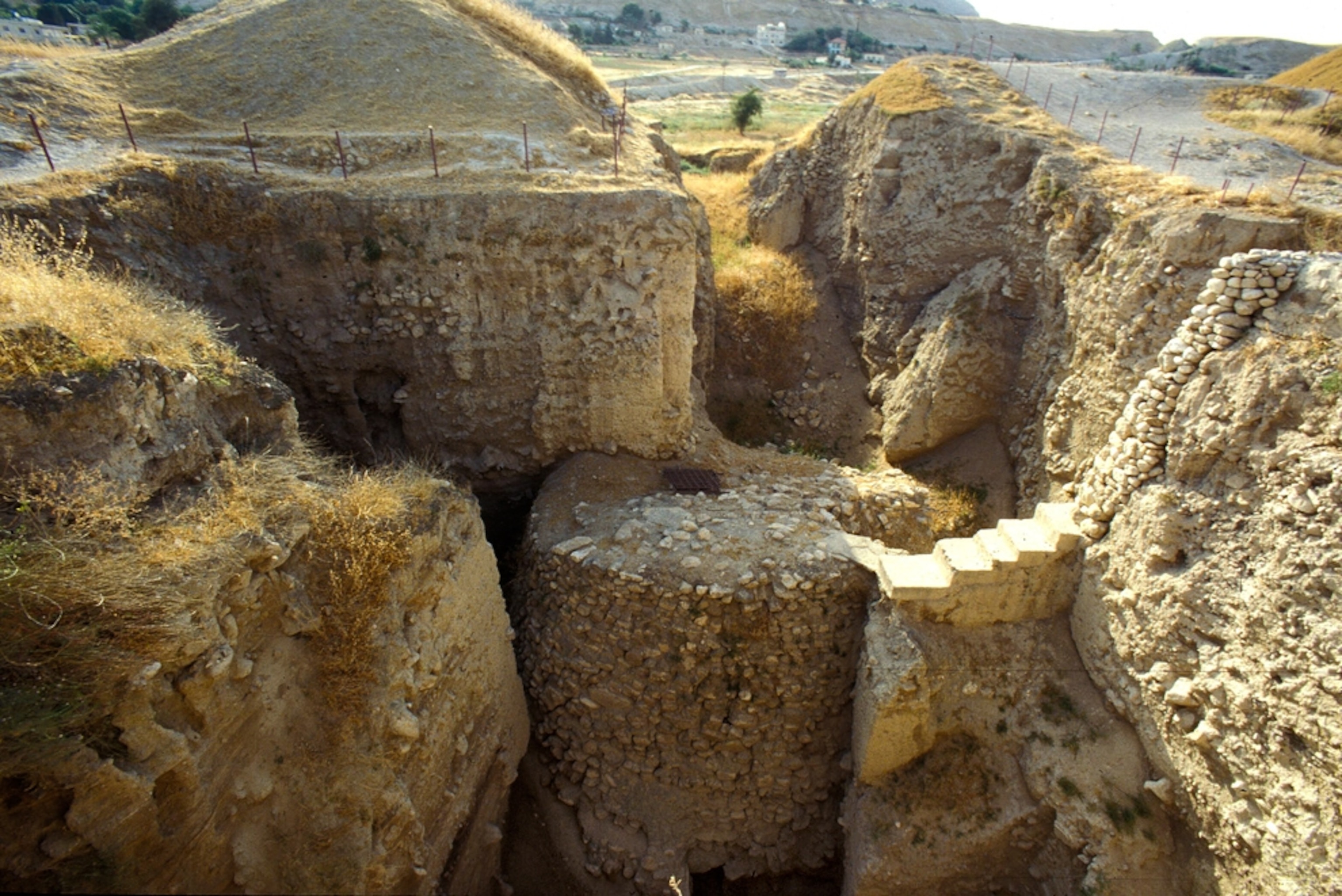
"First Skyscraper" Built to Fight Solstice Shadow?
Tower of Jericho linked to peak where Christ is said to have been tempted.
In the shadow of the mountain where many believe Satan tempted Christ stands what scientists call the world's oldest skyscraper: the Tower of Jericho.
Built thousands of years before that biblical temptation, the 11,000-year-old tower has long been an archaeological mystery. Now a new study says the structure was linked to the summer solstice—and may have been a symbolic shield against darkness.
For more than 50 years, historians have puzzled over the three-story stone ruin, which is attached to the ancient walls of the town of Jericho in what's now the West Bank.
Eleven thousand years ago Jericho residents had mastered neither agriculture nor the wheel and had only just abandoned a nomadic lifestyle. How could they have built what some see as the world's first monumental public building in one of the world's first cities?
"There is no doubt that the Tower of Jericho has befuddled people for a while," said archaeologist Brian Byrd, who wasn't part of the new study, published in the March issue of the journal Antiquity.
"It still remains a bit of an enigma."
New computer simulations suggest that on the evening of the summer solstice—the longest day of the year and harbinger of the darker days to come—the shadow of nearby Mount Quruntul would first hit the Tower of Jericho, then expand to engulf the rest of the city.
That may explain why the tower was built where it was, archaeologist and study co-author Ran Barkai said, adding that "the setting of the sun was and still is considered a frightening moment."
Apparently motivated by this fear of darkness, "local residents [were] persuaded ... to join a tremendous building effort intended to protect them," Barkai and doctoral student Roy Liran, both of Tel Aviv University, speculated in a joint statement. Exactly how it might have protected them is unclear.
(Related: Find out why a palace near Jericho is among 12 ancient landmarks on the verge of vanishing.)
Tower of Jericho Built on Foundation of Fear?
Thick-walled and cylindrical, the Tower of Jericho features a steep internal staircase with plastered walls and would have taken a hundred men more than a hundred days to build, according to previous research.
"There was nothing like that before it and nothing like that for many years after," Barkai told National Geographic News.
Earlier theories had suggested the tower provided defense or flood control. But those ideas were abandoned as it became clear that Jericho faced no serious risk from either warring neighbors or surging rivers.
Barkai argues that the tower, with its connections to astronomical events, was built as a symbol of the community's strength and cohesiveness, in an era when humans were still adjusting to a settled life.
But he also sees a more unsettling undercurrent to the structure.
The tower is the first large-scale "manifestation of the manipulation of power," Barkai suggests.
To persuade villagers to undertake the hard labor of building the tower, political leaders may have "manipulated fears of darkness and the setting sun," he speculated. "This is an old trick, it seems, and not a modern invention.
"Feelings are not left in the archaeological record," he said.
But generally speaking, he said, the shift to agriculture—which the tower builders may have been experimenting with—also marked a transition from the relative autonomy enjoyed by hunter-gatherers to the autocracy that often developed as a way of managing the settled societies that sprang up after the spread of farming.
Of course, Barkai concedes, it's impossible to know with certainty whether the tower builders were motivated by fear or joy, though he suspects the former. "I can't say how obeying others is done out of joy or happiness."
(Related: Get the story behind a huge ancient underground chamber found near Jericho.)
Towering Assumptions?
Other researchers are skeptical of the study's astronomical connection and its fear factor.
For one thing, the interplay between structures and the sun is so complex that it's generally hard to tell which effects are intentional and which are due to chance, ancient-astronomy expert Stephen McCluskey, a former professor at West Virginia University, said via email.
For another, most ancient peoples saw the summer solstice as a cause for celebration, not fear, according to Byrd, who's studied the transition to agriculture in the Middle East and is on the staff of the Far Western Anthropological Research Group, a California-based consulting firm.
Whatever scientists ultimately decide about the tower's purpose, study co-author Barkai said, it's clear that the little skyscraper was a huge accomplishment—built thousands of years before Egypt's pyramids by Stone Age humans one step removed from nomadism.
"We must not underestimate their capabilities," Barkai said. "They were capable of doing magnificent things."
More: Read the early history of the Holy Land in National Geographic magazine >>





